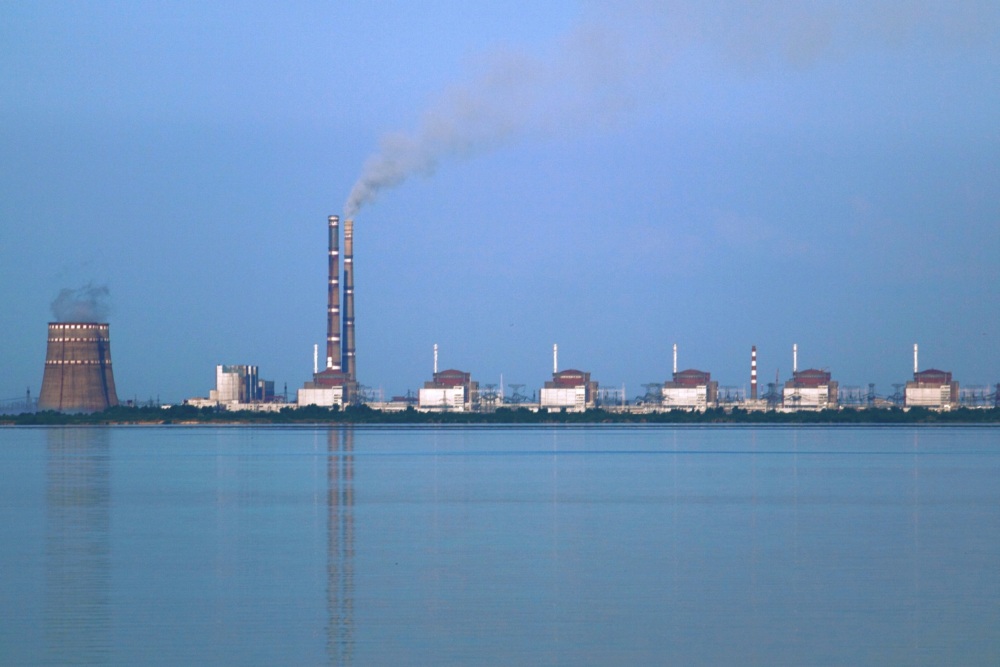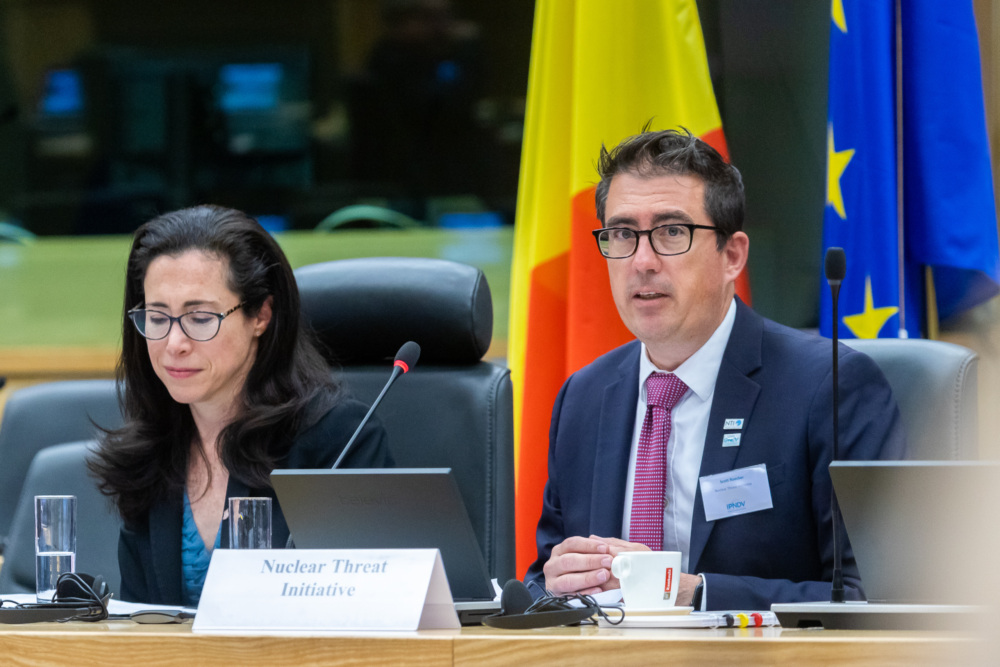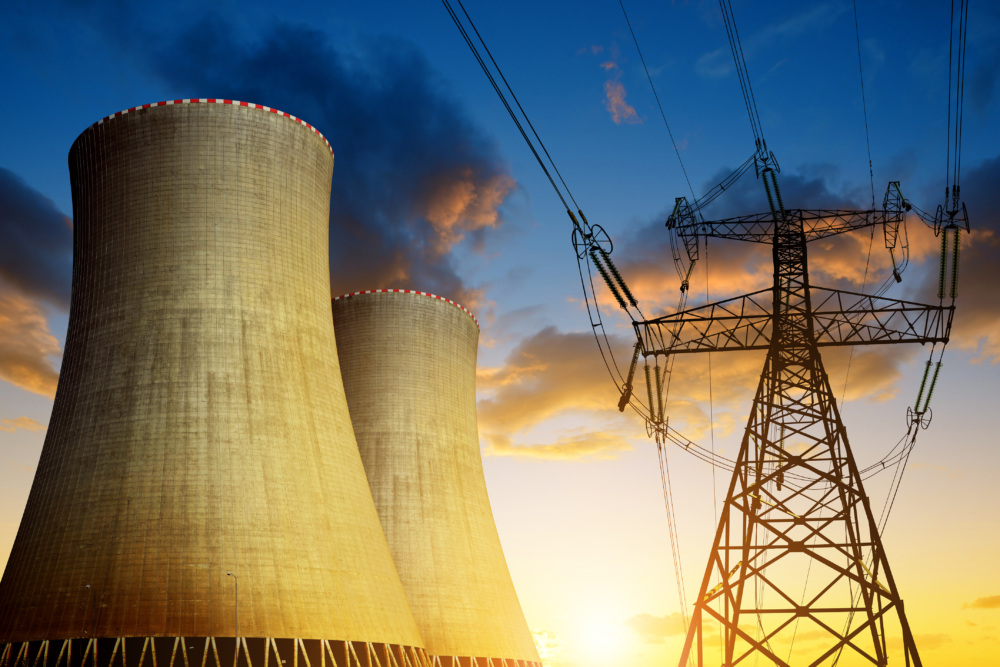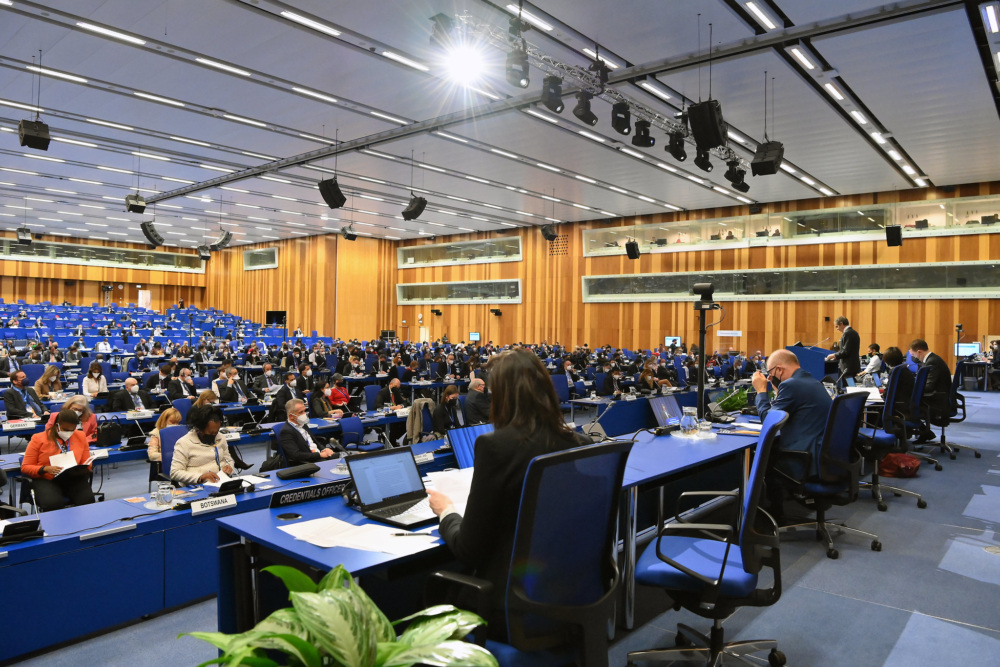
Nickolas Roth
Senior Director, Nuclear Materials Security
Atomic Pulse
Even amid the ghastly images coming out of Ukraine since Russia launched its invasion on February 24, the footage broadcast from Enerhoder on the night of March 3 was stunning: Russian forces shelling Europe’s largest nuclear power plant, a massive facility with six nuclear reactors. Nickolas Roth, senior director for NTI’s Nuclear Materials Security program, explains what happened at the Zaporizhzhia nuclear power plant that terrifying night, what could have happened, and what the long-term implications are for nuclear security and nonproliferation efforts around the world.
This post was updated on March 8, 2022
What happened at Zaporizhzhia?
On March 3, Russian forces attacked the Zaporizhzhia nuclear power plant in Enerhoder, a small city in southern Ukraine. The plant was shelled by Russian troops throughout the night damaging the site and injuring two people. According to the State Nuclear Regulatory Inspectorate of Ukraine, Ukraine’s nuclear regulatory body, it was initially unclear how safety systems were impacted and “additional assessments based on the results of the comprehensive inspections” were needed. Reportedly, as a result of the attack, “the reactor compartment building” of reactor Unit 1 was damaged, two artillery shells hit the facility for dry storage of nuclear fuel, and a fire that was eventually extinguished “severely damaged the training center building.” Fortunately, at the moment, the regulator has also said “changes in the radiation situation in Zaporizhzhia region have not been registered, [and] gamma radiation background is within the standard limits.” Zaporizhzhia is the largest nuclear power plant in Europe, with six reactors, and multiple dry cask storage and spent fuel sites.
What’s so dangerous about a nuclear plant being attacked?
This is the first time there has been a full-scale war in a country with a significant nuclear power infrastructure. There are 15 commercial nuclear reactors spread across four sites in Ukraine, making up more than 50% of the country’s energy supply. There have been attacks on nuclear facilities throughout the country. Nuclear power plants are equipped with safety systems and the reactor structures are extremely resilient, but if the cooling at a reactor or spent fuel pool is removed, the stakes are high. A meltdown at a reactor or a fire within a tightly-packed spent fuel pool could result in widespread radiological contamination, putting people’s health and the environment around the reactor at risk.
Another cause for concern is whether personnel can operate the reactors safely during this crisis. According to reports, the situation at occupied power plants is bad and getting worse. Plant managers need to get approval for any actions, including those related to reactor operations. Ukraine’s nuclear regulator has said it is now having problems communicating with staff at Zaporizhzhya as phone lines, emails, and fax machines are no longer operating. Similar problems occurred in the aftermath of the 2011 nuclear catastrophe in Fukushima when Japan demonstrated that responding to plant emergencies during a broader crisis is incredibly difficult. The tsunami and earthquake there destroyed buildings and safety and security systems; disrupted communications within the plant and to outsiders; injured personnel; and impeded outside responders from providing support. Like Fukushima, it likely also would be very difficult to respond to a plant emergency during a firefight or a war. If operators are “working at gunpoint,” as some reports suggest, they are operating under extreme duress, which could further impact safety and security at the site. This situation is not sustainable.
It’s worth noting that, while an accident at a nuclear power plant could spread radiation across hundreds of square miles, the impact would be different from the blast, fire, initial radiation, and long-term radioactive fallout caused by a nuclear weapon.
What has the response been?
The current crisis highlights the critical leadership and information-sharing role that the International Atomic Energy Agency (IAEA) plays around the world. The IAEA is serving as a key conduit for information about safety and security of nuclear facilities in Ukraine through its periodic updates, and Director General Rafael Grossi is playing an important political leadership role. He has called for a “halt to the use of force” at Enerhodar and for military forces to refrain from violence near the plant. The Director General has also said he was prepared to travel to the Chornobyl Nuclear Power Plant to negotiate a commitment from all parties ensuring the safety and security of all Ukrainian nuclear power plants, stating, “It is high time to stop an armed conflict from putting nuclear facilities at severe risk, potentially endangering the safety of people and the environment in Ukraine and beyond. Words must mean something—it is time for action.”
What are the broader implications for nuclear security and nonproliferation?
The crisis is still unfolding in Ukraine, and the outcome for nuclear power plants in the region is extremely uncertain. One thing already clear is that Russia’s illegal, immoral, and profoundly dangerous attacks on Ukrainian nuclear sites raise new questions about global nuclear security efforts. This will likely have widespread implications on the institutions and agreements that support stronger nuclear security around the world, and it may make future nuclear security and nonproliferation efforts more difficult.
Later this month, officials from around the world are scheduled to gather for the first-ever review of the Amended Convention on Physical Protection of Nuclear Material, the only treaty requiring countries to protect nuclear materials and nuclear facilities. This will be a pivotal moment for the future of nuclear security and the international legal and institutional architecture that supports it. During the review, states will discuss the treaty’s implementation, adequacy and the broader nuclear security environment referred to as the “prevailing situation.” Russia’s attacks on nuclear facilities are likely to have an enormous impact on this dialogue.
A side effect of this crisis has been it has reawakened public awareness around the importance of safety and security of nuclear facilities and President Putin’s threats are a reminder about the profound danger nuclear weapons pose to all.
Sign up for our newsletter to get the latest on nuclear and biological threats.
Scott Roecker, vice president of the Nuclear Materials Security team, sat down with NTI's Mary Fulham for the latest in Atomic Pulse's "Get to Know NTI" series.
For nuclear power to be a problem solver rather than a problem maker, the international community must push for a smart brand of nuclear power that prioritizes safety and security.
This week in Vienna, experts from the Nuclear Threat Initiative are joining government officials and experts from international organizations, non-governmental organizations, academia, and the nuclear industry for the first-ever review of the only legally binding treaty on nuclear security—the amended Convention on the Physical Protection of Nuclear Materials (A/CPPNM).



